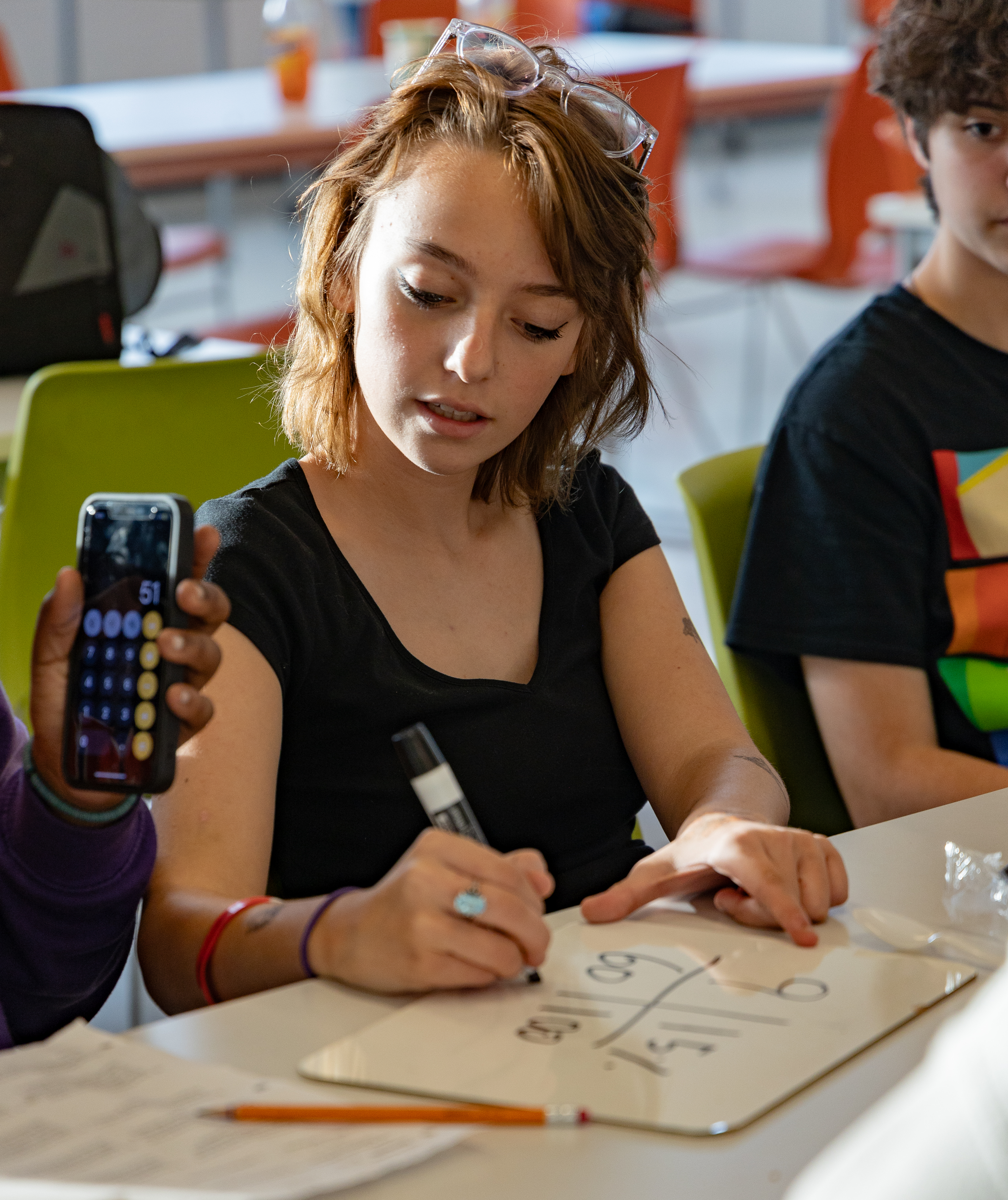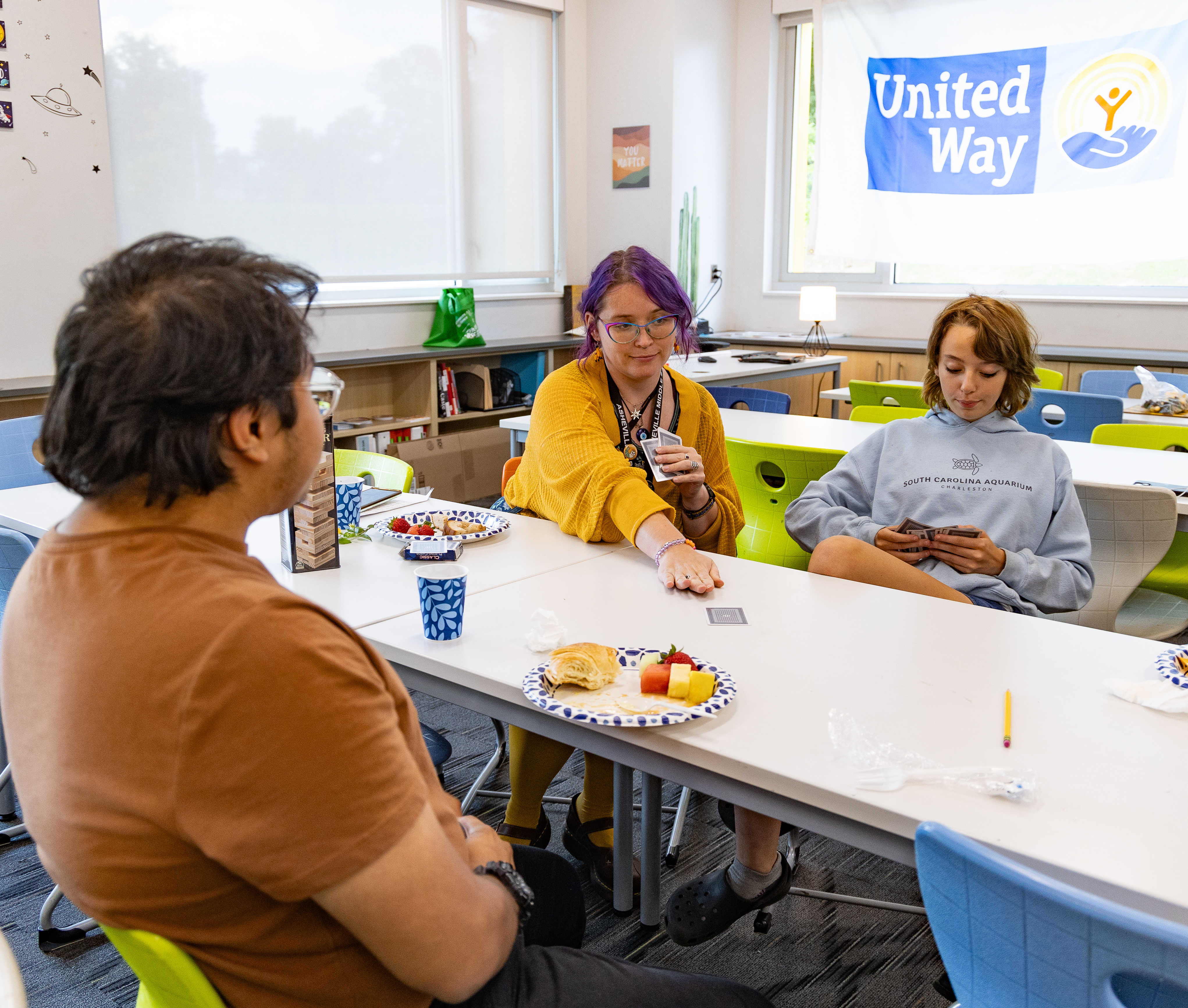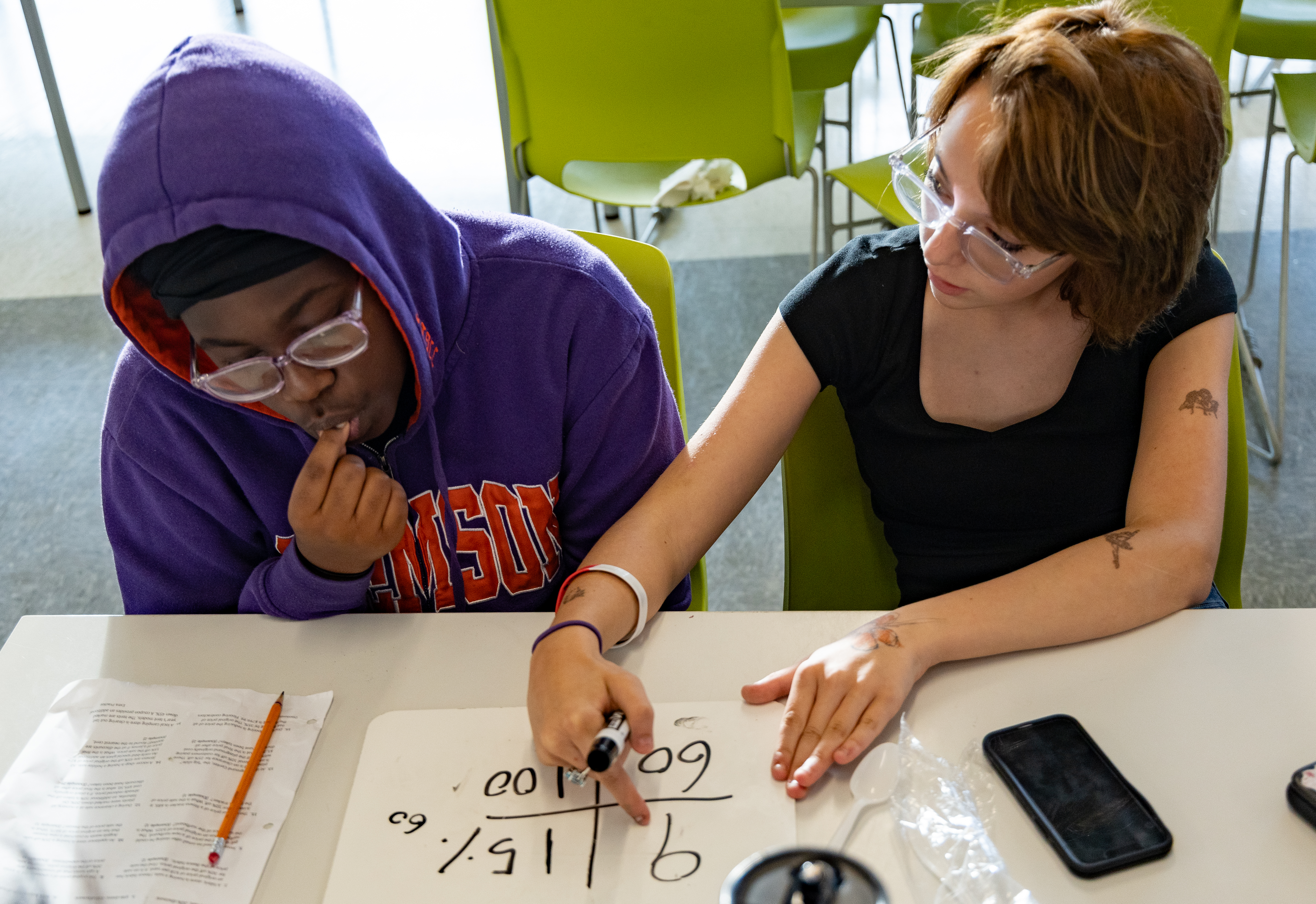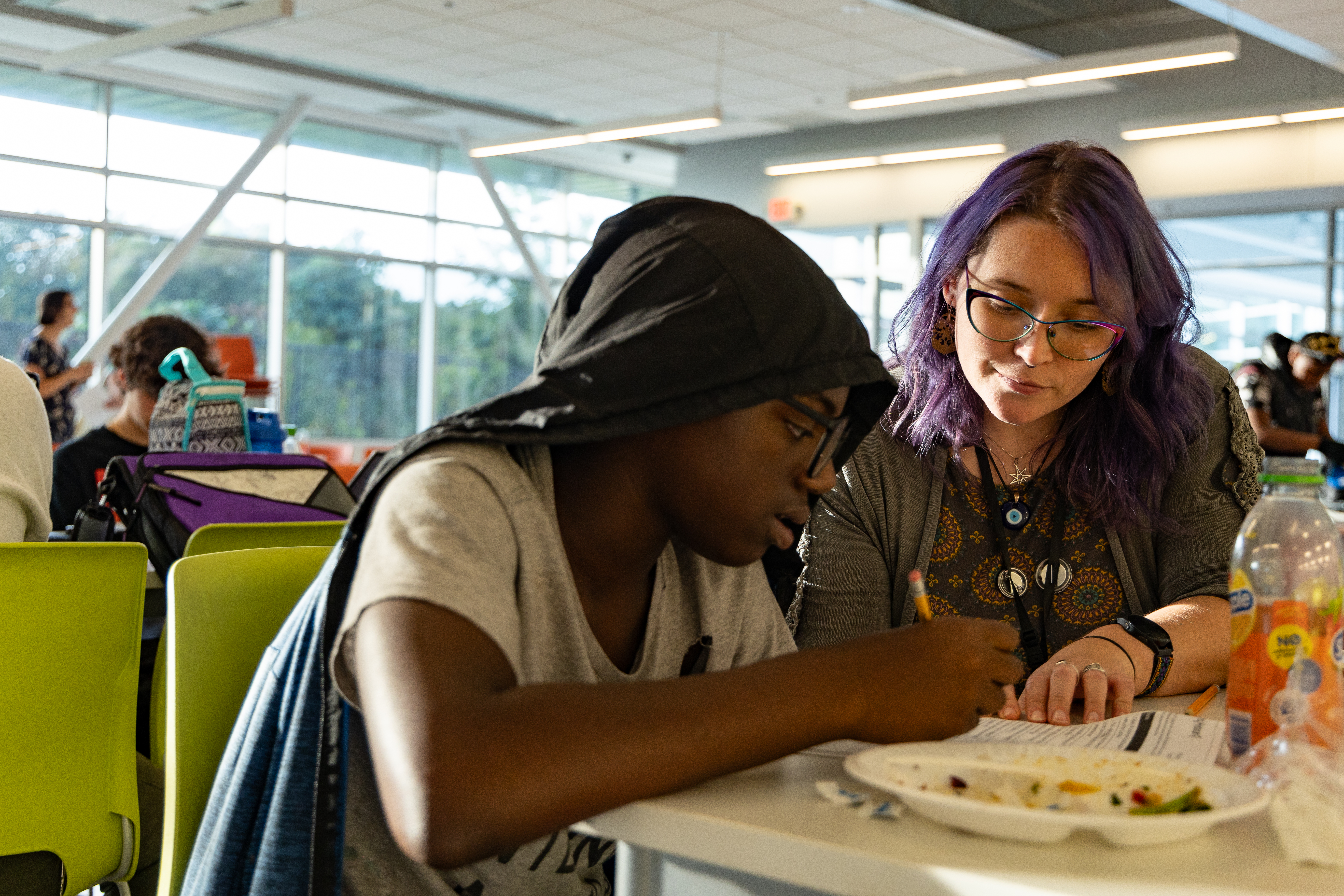In the heart of Asheville, a remarkable story unfolds at Asheville Middle School, a story that bridges generations and nurtures talent. Meet Tea, a bright and determined 8th grader at Asheville Middle School, and Gabby Wirth, an inspiring teacher. Their extraordinary bond is woven through their participation in Community Nights, a program that not only strengthens relationships but also acts as a catalyst for academic growth- ultimately working to close the opportunity gap. You’ll also discover how United Way of Asheville and Buncombe County (UWABC), along with other community partners, use collective impact to achieve the United for Youth Bold Community Goal. So, step into the world of Tea and Gabby, whose connection forged in Community Nights' warmth, symbolizes our mission's very essence.
It was 5pm on a Thursday, but the lunch room was still bustling around Tea. Some students anxiously waited for their second helping of dinner, others chatted in a corner, and still others worked in small groups with teachers to complete homework and class projects. Tea has been attending Community Nights featuring Homework Diners since sixth grade. Not only have they found the help they needed around math but they have also discovered things much more elusive and coveted than an A+ in math.
“I probably would have failed all four semesters in math class if I hadn't gone to this,” Asheville Middle School eighth-grader Tea said as they looked around the Asheville Middle School cafeteria.
“Community Night helps me have trust for the teachers”, said Tea, “and kind of, like, realize that I can come to them if I need support in any classes or just with other stuff.”
Trust is not an easy thing to come across but the beautiful thing about Community Nights is that it removes some of the barriers that can be present during the official school day. As Gabby Wirth, an AMS teacher who has worked closely with Tea for two years now, said, “Well, the the difference of the 5:00 shift, you're not in that same structured environment where it's like, all right, you need to sit, do this work, focus, pay attention. You can have a little bit more relaxation. You can kind of joke and then bring it back to the topic at hand. You can be a little bit more personable, a little more real.”
The trust Tea feels for the teachers who participate in Community Night and the trust Gabbie now has for Tea was formed out of each person's decision every week.
Along with the essential element of trust, Gabby Wirth also noted, “[Tea] came here and worked, and in that extra time, they built up confidence in the ability to tackle it. And then now I see Tea in school to their best friend being like, ‘Come on,’ we need to do this.”
The skills, connections, and camaraderie found at Community Night helped Tea push themselves to grasp new concepts and be brave enough to try it. Fostering abilities and creating a safe communal place where trust is deeply valued is essential in nurturing future leaders like Tea. Still, the benefits of Community Nights extend beyond the singular experience. The Community School Strategy aims to ensure that every student has access to the resources, support, and enrichment they need to succeed. This, in turn, works to level the playing field and directly address the achievement and opportunity gap that exists in American society.
But What is the Opportunity Gap, and How Do We Close It?
The achievement gap and the opportunity gap are related but distinct concepts, and they both contribute to disparities in academic outcomes for students. Unequal opportunities lead to unequal outcomes, which is why addressing both is essential. When the circumstances into which people are born — such as their race, ethnicity, ZIP code, and socioeconomic status — predict the likelihood of decreased access to social and economic mobility in life, this is referred to as “the opportunity gap.” And like many others, our community has grappled with opportunity gaps for a long time.
The achievement gap is the result of the opportunity gap. Students from under-resourced backgrounds often face greater challenges like limited access to quality afterschool programs and reduced exposure to enriching educational experiences. As a result, they tend to fall behind their more privileged peers, leading to lasting disparities in academic achievement.
Closing the opportunity gap is not just a matter of equity; it's essential for fostering a fair and just society and ensuring every child will be able to fulfill our Communities Bold Community goal of having ALL Asheville City and Buncombe County students graduate from high school ready and fully prepared to pursue their goals and dreams, by 2035.
UWABC understands no one person, group, or organization will close this opportunity gap alone. That is why UWABC works through a lens of collective impact. A collective impact initiative is multiple community organizations and stakeholders working to maximize each other's impact by addressing the problem's multifaceted nature.
How Do Community Nights Affect the Opportunity Gap?
The opportunity gap might seem overwhelming, and it's natural to wonder if a once-a-week afterschool program that provides free dinners, fosters community connections, and offers academic support can really make a difference in the face of these significant challenges. However, we can look again, at the story of trust, support, and academic achievement that Tea and Gabbie Worth have shown. Stories similar to theirs happen weekly at the Community Nights of the other 6 Community Schools in Buncombe County.
As Gabby simply stated, “Community Night helps relationship building, which then builds trust, builds character, builds leaders, and it's amazing, to see.”
Don't Stop There...
Want to support initiatives Community Nights featuring Homework Diners? Click Here
Volunteer your time at a Community Night near you! Click Here
Like this blog? We think you'll like this one too!





